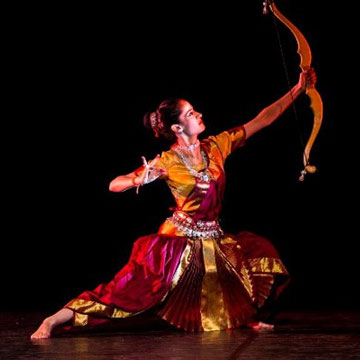 Out
Out of the different dance form like bharatnatyam, katthak, odisi, manipuri, kattakalli etc, one is – chau. Basically this is a folk dance of Odisa, West-Bengal, Bihar and Jharkhand.
Now explored in Saraikela it has gained its place the international arena, but due to dearth of conservation policy, this form is standing at the edge of extinction. Folk dance is not only a thing of entertainment but it also tells a lot about ancient culture. Thus its conservation and promotion is our duty.
Chau in Jharkhand Saraikela means shadow, camp or mask. Seperated from Bihar, in Jharkahand, people recognise this form with is received as heritage as camp. In Mayurganj odisa this form is recognised as well. There stands no controversy that in development and conservation of the form Kharsavan and Saraikela royal families have contributed a lot. Because of the conservative efforts of the two royal families the art form have been prospering.
The Role of Prince Radhendra Narayan Singhdev of Saraikela, who is decorated with Padmshree by the Govt of India in the growth of the form is incredible. His life long effort has helped gain form build repute internationally. His death has created a void not only in the artistic world but the world. Display and recognition of Chau is not only due to efforts of Prince Radhendra Narayan Singhdev but the credit also goes to his son Prince Sudhendra Narayan Singhdev.
Being devoted to the art form from his childhood and denouncing his royal comforts, as an devout artist, his efforts at Saraikela is worth noticing. His porperty was taken over by the government after the fusion of the empire with independent India. What ever was left with him, he sold that and applied the frunds for the cause of the art form.
In the last hours of his life the only thing with remained with him was his ancestral palace which was nothing but ruins. Due to lack of finance his devotion towards art become difficult, still because of is eternal love of art, he roamed on is by-cycle, congragated kinds and tought them the art. Thus is devotion for the regeneration of the art was continuous. He in is very simple attire was fond of paan.
His son Vimal Kirti Singhdev, who is now handicapped due to the act of unsocial miscreants who threw bomb on his legs, is said he carried the same interest in the art form as his father which is opponents didn’t like so they turned him handicapped by thowing bomb on him. One more shining star of the royal family this got lost. This small principality of Bihar and Odisa is famous for the development and spread of the art form.
He got an opportunity of performing the dance in presence of the eminent guest invited by the then Prime Minister Pt. Jawahar Lal Nehru in the Asian Relation Forum called at his residence in Delhi Yark Road in the year 1947. In 1949 he got a chance to represent the art in Bhartiya Sanskritik Sammelan organised by Sangeet Natak Acadamy.
In the same year he was appointed as General Secretary of Shree. Kala-Peeth (Center of Art and Culture). His reputation rose sky high with his performance of Ratri Nritya based on Ratri Shloka of Rigveda in 1944, Kalidas’s great creation Meghdoot (cloud messanger) in 1949 and Roop Kumari’s Time and Space in 1972.
Government decorated him with Sangeet Natak Acadamy in 1963. In the government’s culture exchange programme held in the eastern European Countries like Bulgaria, Yugoslavia and Hungry he got the honour of representing the country.
On the invitation of Japan’s foundation in the year 1981, ye got a chance of visiting Japan were he got chance of performing his art in big cities. And before this in 1973 at Delhi at International Dance Forum’s festival, he got a chance of performing Chau dance in presence of eminent artists.
He won the First Price in Japan for his performance on Asian Traditional Performing Art in 81 and to appreciate his devotion to the art, the great artist in the year 1991 was conferred with the prestigious ‘Padmashree” on the occasion of Republic Day. This was coverred by big new papers around the world.
 Out of the different dance form like bharatnatyam, katthak, odisi, manipuri, kattakalli etc, one is – chau. Basically this is a folk dance of Odisa, West-Bengal, Bihar and Jharkhand.
Out of the different dance form like bharatnatyam, katthak, odisi, manipuri, kattakalli etc, one is – chau. Basically this is a folk dance of Odisa, West-Bengal, Bihar and Jharkhand. 